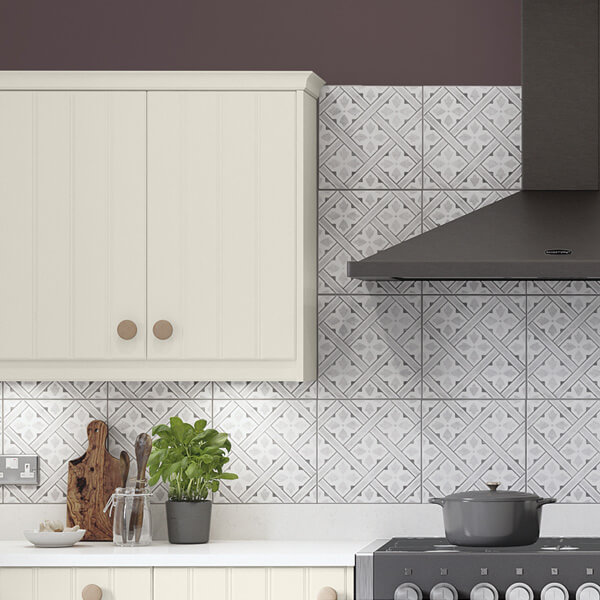Kitchen Cornices and Pelmets: Types & Options Explained
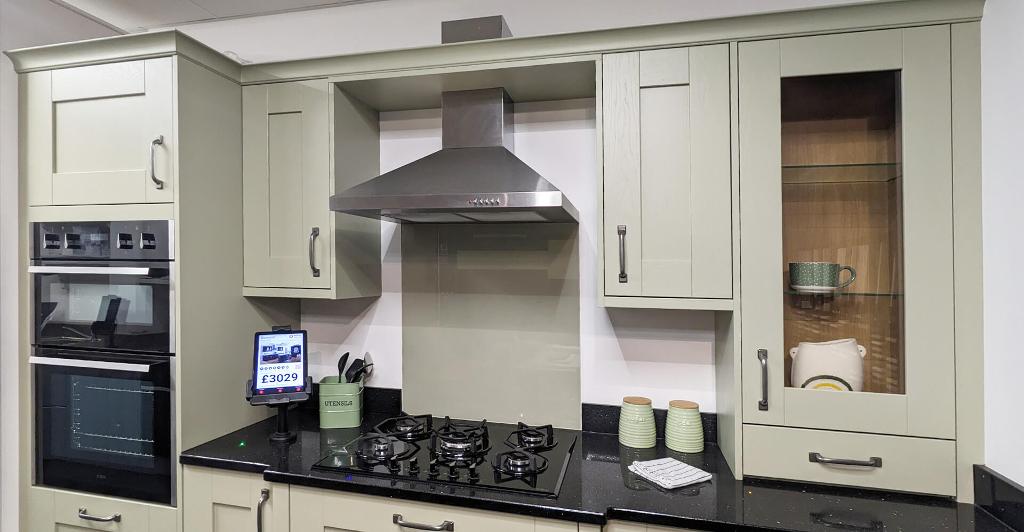
Kitchen Cornices and Pelmets in Better Kitchens Showroom
In kitchen design, small details matter a lot. While big things like cabinets and appliances usually get the most attention, smaller features like cornices and pelmets are what really bring the kitchen together.
These little parts make a big difference in how the kitchen looks and works.
This guide will explain the different kinds of kitchen cornices and pelmets, what they're good for, and how to pick and fit them the right way.
What Are Kitchen Cornices and Pelmets?
Kitchen cornices and pelmets are decorative mouldings that add a finishing touch to the top and bottom of wall cabinets, respectively, enhancing the overall aesthetic and concealing gaps or lighting fixtures for a polished kitchen design.
What Is a Kitchen Cornice for?
A kitchen cornice is essentially the crown of your kitchen cabinets. It is a decorative moulding that sits atop your wall units, seamlessly blending them into the wall for a polished look.
Beyond aesthetics, cornices help hide lighting fixtures and any uneven gaps between the cabinet and the wall, ensuring everything looks intentionally placed and meticulously finished.
What Is a Kitchen Pelmet for?
Conversely, a kitchen pelmet acts as the finishing base of your cabinets. Positioned at the bottom of wall units, pelmets serve a dual purpose.
They conceal under-cabinet lighting installations and any shadows or gaps below, providing a cleaner look while enhancing the functional aspect of lighting without the fixtures being directly visible.
Exploring the Types of Kitchen Cornices and Pelmets
Looking into kitchen cornices in detail and pelmets, we find several designs - both modern and traditional. Each design offers unique looks and uses that fit any kitchen style.
Types of Kitchen Cornice
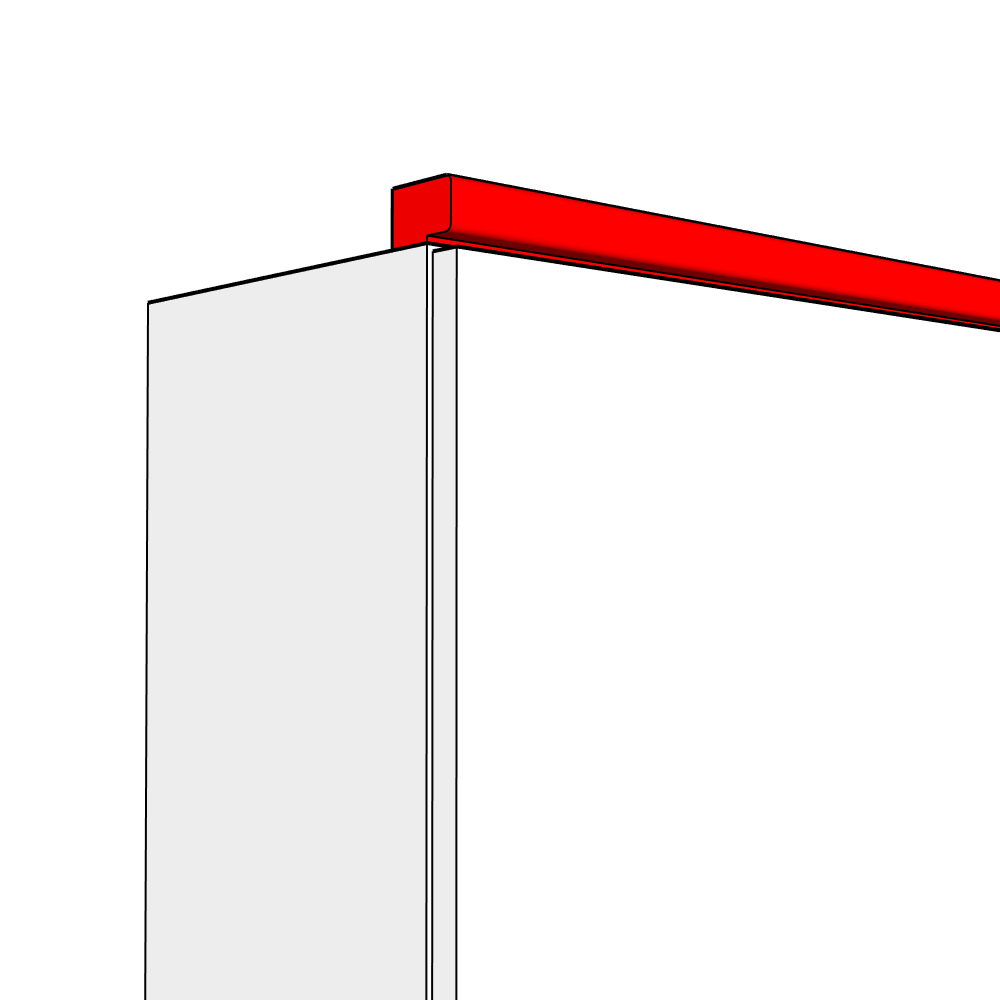
Universal Cornice
The universal cornice is the chameleon of kitchen design, capable of fitting into any style with its modern, squared edges.
It's particularly favoured in minimalist designs where simplicity and clean lines are paramount. Its versatility also allows it to double as a pelmet, offering a cohesive look both above and below the cabinets.
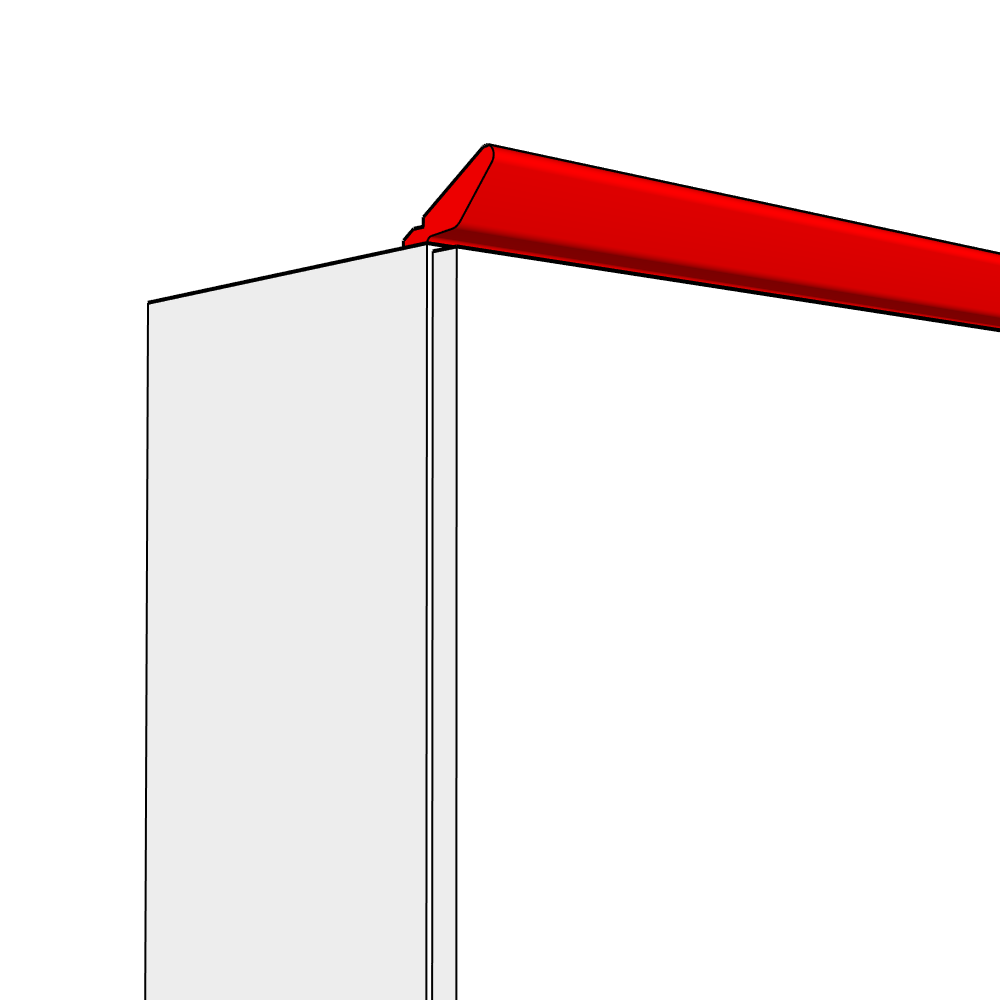
Tangent Cornice
This type is the bridge between modern and traditional, featuring a slight angle or curve that introduces a subtle design element without overwhelming the space.
It's perfect for contemporary kitchens that favour sleek designs but are looking for a touch of sophistication.
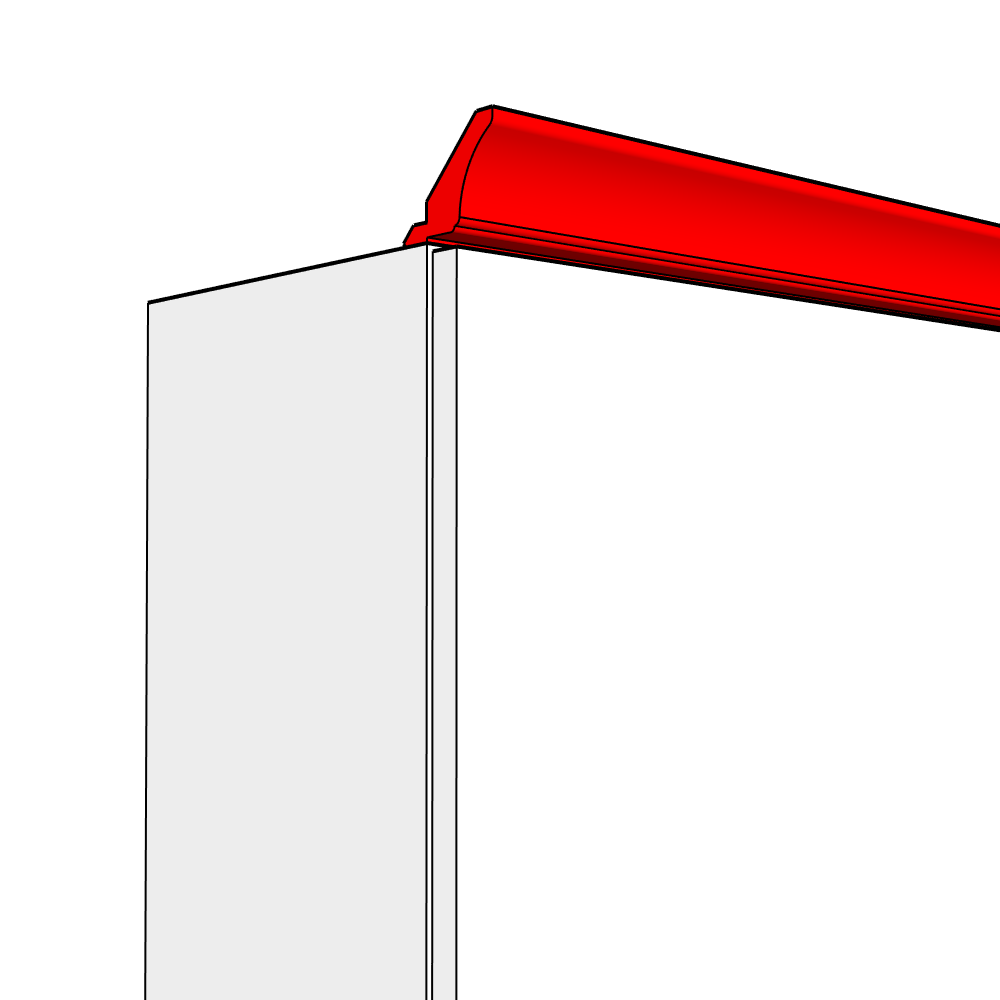
Classic Cornice
For those with a penchant for the classics, a traditional cornice offers the ornate detailing reminiscent of historical homes and luxurious settings.
With its intricate patterns and grooves, it adds a layer of elegance and grandeur to farmhouse or traditional kitchens.
Types of Kitchen Pelmets
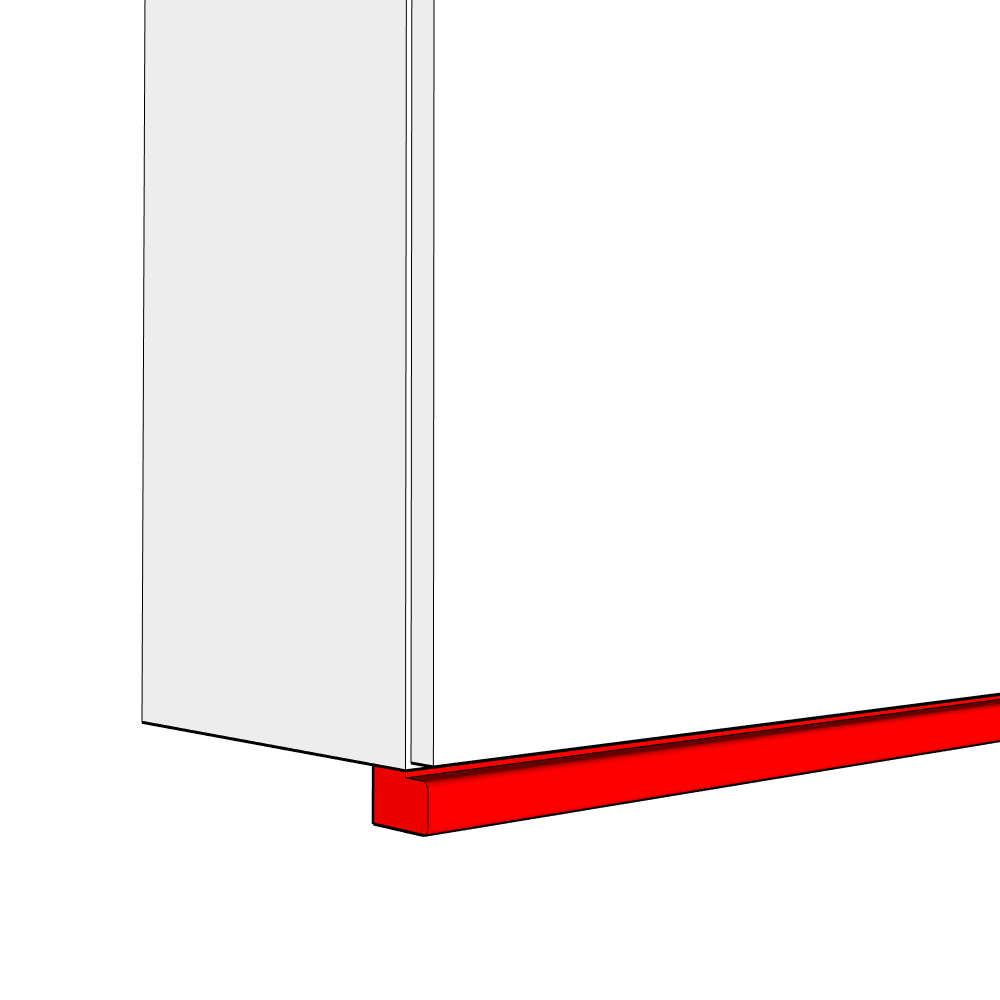
Universal Pelmet
Aligning with the universal cornice, the universal pelmet ensures design continuity.
It's designed to mirror the cornice's attributes but is positioned to complement the cabinetry from below, creating a harmonious look throughout the kitchen.
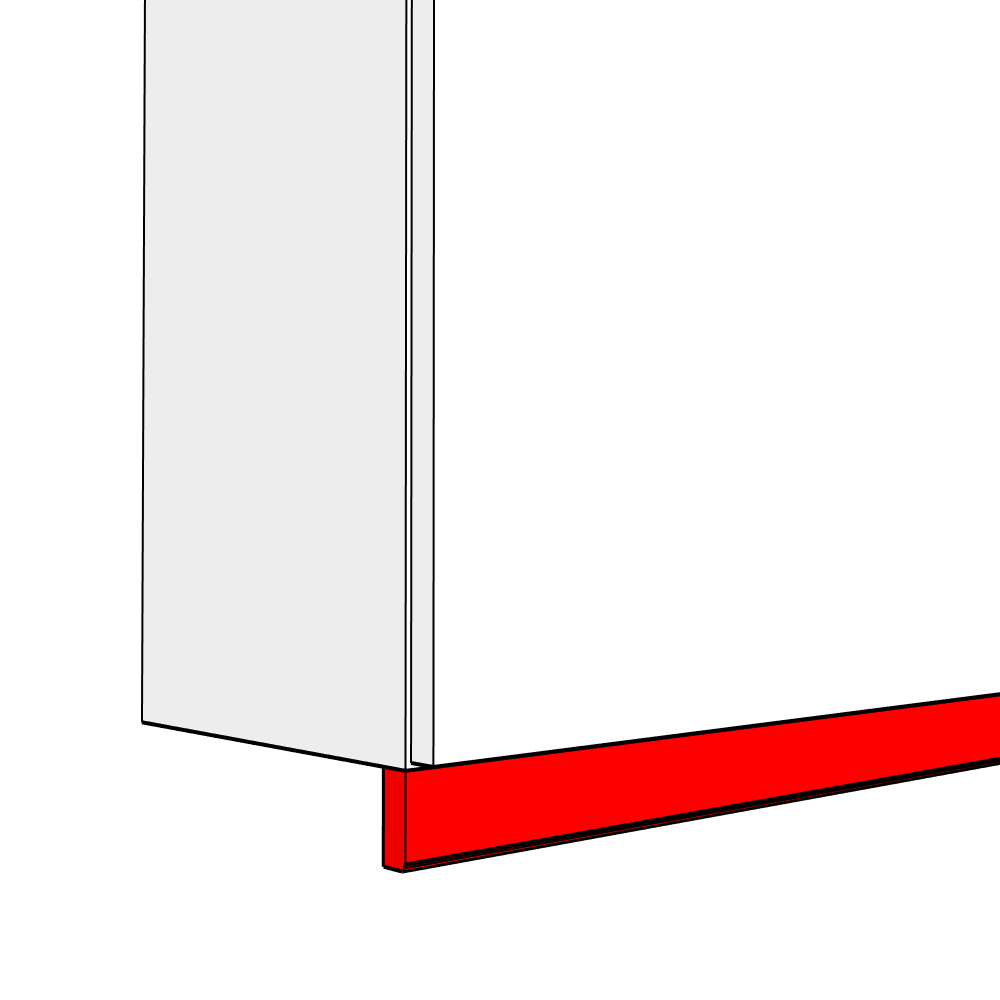
Tangent Pelmet
A Tangent pelmet is deeper and may include subtle moulding details at its edge, making it a suitable companion for both tangent and traditional cornices.
The design is a nod to modernity while still respecting the classical elements of kitchen design.
Comparison of Kitchen Cornices and Pelmets
This guide makes it easier for you to choose the right design elements when updating your kitchen.
It focuses on kitchen cornices and pelmets, different styles, how they fit with various kitchen themes, how to install them, and the overall impact they have.
| Feature | Universal Cornice | Tangent Cornice | Classic Cornice |
Universal Pelmet | Tangent Pelmet |
|---|---|---|---|---|---|
| Design | Modern, square finish | Slightly angled or curved | Ornate with detailed grooves | Matches universal cornice design | Deeper with possible moulding at bottom |
| Suitable for | Minimalist kitchens | Modern to semi-traditional kitchens | Classic or farmhouse kitchens | All kitchen styles | Contemporary and traditional kitchens |
| Installation Note | Versatile, can be used as both cornice and pelmet | Requires precision cutting for angles | May need intricate cutting for detail | Aligns with bottom of wall units, can double as cornice | May require precise cuts to fit around fixtures or fittings |
| Visual Appeal | Clean and sleek | Clean with a subtle elegance | Decorative and elegant | Seamless with wall units | Adds depth and character |
How Are Kitchen Cornices and Pelmets Installed?

Putting up kitchen cornices and pelmets involves careful measuring, cutting, and fixing these decorative strips along the top and bottom of your wall units. They must line up exactly with your cabinet doors for a flawless look.
Installation Principles for Cornices and Pelmets
The installation of both cornices and pelmets follows a principle of continuity, where these elements should extend in a single, uninterrupted line across all wall units, rather than being cut and fitted per individual cabinet.
This approach not only enhances the aesthetic appeal but also ensures a uniform appearance throughout the kitchen.
Step-by-Step Installation Guide
-
Continuous Runs: Once the wall units are securely mounted, the cornice should be applied across all units as a continuous piece. Similarly, pelmets are installed in a continuous run along the bottom of wall units. This method reduces the number of cuts and joins, creating a cleaner look.
-
Cutting and Measuring: For both cornices and pelmets, accurate measuring and cutting are crucial. A common technique involves mitre joints at corners or ends that return to the wall, requiring precise angles to ensure a seamless fit. It's recommended to allow for a 10% wastage when purchasing materials to account for any cutting errors or adjustments.
-
Alignment and Positioning: A critical aspect of installation is ensuring that the cornice and pelmet align properly with the cabinet doors. This involves adjusting their position to account for the door thickness, ensuring that when the doors are reinstalled, there is no misalignment causing visual discord.
-
Securing the Fixtures: The method of attaching cornices and pelmets can vary. They can be screwed through the top of the cornice or from inside the cabinet. Pelmets might also be attached using screws or, in some cases, L brackets if the shape or design necessitates it. The goal is to achieve a sturdy installation that complements the cabinetry without visible hardware.
Avoiding Common Mistakes
- Improper Alignment: One of the most common errors involves aligning the cornice or pelmet with the cabinet body rather than the door. This misstep can lead to an unsightly step effect, detracting from the kitchen's overall appearance.
- Incorrect Positioning: Failing to compensate for the door's thickness when positioning cornices and pelmets can also result in a gap between these elements and the cabinet doors, undermining the seamless look that is the hallmark of professional installation.
Final Thoughts
The Importance of Cornices and Pelmets in Kitchen Design
Incorporating cornices and pelmets into your kitchen design not only elevates the space aesthetically but also serves practical purposes, from hiding lighting fixtures to smoothing out uneven gaps.
The right choice in style, coupled with precise installation, can transform your kitchen from standard to extraordinary, proving that it's the small details that make a big difference.
As you embark on your kitchen renovation journey, remember that the beauty of a kitchen lies in the harmony of its parts.
Cornices and pelmets may be small components of the overall design, but their impact is significant.
By understanding the options available and the best practices for installation, you're well on your way to creating a kitchen that is as functional as it is beautiful.

